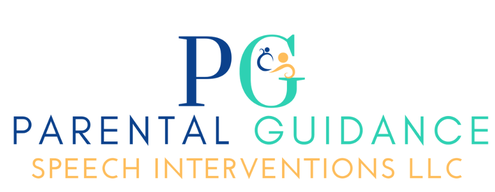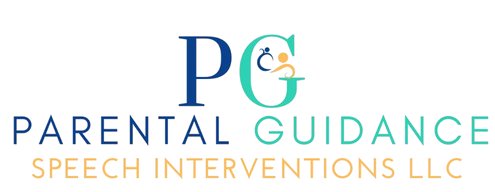Clear speech builds strong links with friends, family, and workmates. Yet many people—kids and adults alike—struggle to say what they mean. Misunderstood words can hold back learning, dampen confidence, and create daily stress. The good news is that speech-language pathologists (SLPs) use proven methods to sharpen sound production, voice control, and language skills at any age. Spotting trouble early is key. Below, you’ll find ten sure signs that it’s time to meet an SLP. Each section offers plain facts, quick checks, and useful next steps so you can decide if help is needed right now.
Words Arrive Very Late
Late talkers often miss well-known milestones. By 18 months, most children say about 20 words, and by age 2, the list grows to 50 words and two-word phrases. A slower path can signal a deeper delay.
- Fewer than 20 words at 18 months
- No two-word phrases by 24 months
- Limited babble or sound play as an infant
An SLP reviews hearing, mouth strength, and family history before setting small, clear goals. Early therapy uses playful drills—picture books, songs, and routines—to grow vocabulary fast. Parents get home plans, so practice happens in every room, not only during clinic visits.
Speech Sounds Missing
English has 24 consonant sounds, yet many kids swap or skip tricky ones. By 4 years, strangers should understand almost all speech. If sounds like /k/, /g/, /s/, or /r/ stay absent, a phonological delay may be present.
- “tat” for “cat” after age 3
- “wabbit” for “rabbit” past age 6
- Dropping end sounds in most words
SLPs use tongue placement charts, mirrors, and tactile cues to teach the target sound in isolation, then in words, phrases, and stories. Home worksheets support steady carry-over. Untreated errors can linger into school years, causing reading and spelling struggles.
Stuttering Stops Flow
Stuttering often starts between ages 2 and 6 and may fade on its own. Red flags pop up when a child repeats whole words more than twice per sentence or stretches sounds beyond one second. Adults may tense their jaw, blink, or tap their feet while forcing words out.
- Frequent sounds or syllable repeats.
- Noticeable tension or facial strain
- Avoiding talking in class or meetings
Modern fluency programs teach relaxed breathing, easy starts, and gentle stretch of vowels. SLPs also guide speakers through desensitization tasks—ordering food and making phone calls—so skills stick where it matters. Early care cuts the risk of lifelong stutter patterns.
Voice Often Sounds Hoarse
A healthy voice is clear, steady, and free of strain. Kids who yell during play or adults who speak for long shifts can develop vocal nodules—tiny callouses on the vocal cords. A hoarse tone that lasts beyond two weeks deserves a check.
- Rough, scratchy sound at rest
- Voice fades by day’s end
- Your throat hurts even without a cold
An SLP teams with an ear–nose–throat doctor who may use a small scope to inspect the cords. Therapy focuses on safe loudness levels, water intake, and breath support. Simple changes, such as “voice rest hours” and mic use in class, often heal damage without surgery.
Trouble Following Directions
Receptive language is the skill of understanding words, sentences, and longer talk. Children should follow two-step commands by age 3 and three-step commands by age 4. Missing those marks can lead to classroom setbacks.
- Needs repeated directions in quiet rooms
- Confuses order words like “before” and “after”
- Struggles with size, color, or shape concepts
SLPs run standardized tests to spot gaps in vocabulary, grammar, and auditory memory. Therapy turns directions into fun quests—“Put the red block under the chair, then clap twice.” Visual aids and rhythm chants reinforce learning, while teachers learn to give shorter, clearer cues.
Reading Starts Off Slow
Speech and reading share the same sound map. When children cannot tell apart similar phonemes—/p/ vs /b/, /t/ vs /d/—decoding printed words feels hard.
- Trouble naming letters and their sounds
- Guesses at unfamiliar words instead of sounding out
- Avoids reading aloud in class
SLPs use evidence-based programs such as Lindamood Phoneme Sequencing (LiPS) or Orton-Gillingham-inspired drills. Students learn to match mouth movements with letters, building a strong phonological base. Early support guards against later spelling gaps and keeps the joy of books alive.
Talking Triggers Frustration
Communication should feel easy. When a speaker works too hard to find words—called word-finding difficulty—frustration grows. Adults may pause mid-sentence or overuse fillers like “um” and “you know.”
- Long pauses while searching for simple words
- Frequent substitutions (“thing,” “stuff”)
- Irritation or withdrawal during chats
An SLP checks fluency, vocabulary depth, and memory recall. Therapy introduces naming drills, category sorting, and timed word lists to speed up word access. Learning cueing strategies (“first letter,” “same meaning word”) cuts down on stalls and builds confidence.
Listeners Keep Guessing
If friends often ask, “What did you say?” speech may lack clarity, even when sounds seem correct in single words. This can stem from poor prosody—rhythm, stress, and intonation that shape meaning.
- Flat or sing-song pitch in most sentences
- Misplaced word stress changing meaning
- Mumbling or dropping syllables
To tune prosody, SLPs record short talks so clients hear patterns first-hand. They mark stress with hand taps, practice rising pitch for questions, and use pacing boards to control the rate. A clearer melody helps listeners understand without extra effort.
Swallowing Feels Difficult
Speech muscles also guide chewing and swallowing. After a stroke, surgery, or chronic disease, food may stick, or a cough may follow every sip. This condition is called dysphagia and needs quick action to avoid lung infection.
- Coughing during meals
- Food left in cheeks after swallowing
- Wet or gurgly voice post-drink
SLPs perform a bedside swallow exam, sometimes with a video X-ray, to watch the bolus move. Therapy may include thickened liquids, chin-tuck posture, or targeted exercises (Masako, Mendelsohn) to strengthen throat muscles. Safe eating keeps nutrition on track and lowers pneumonia risk.
Adults Recovering From Stroke
A stroke can harm Broca’s or Wernicke’s areas, leading to aphasia—loss of language—not intelligence. Signs vary: some people speak few words, others speak many words with little meaning.
- Trouble naming everyday items
- Mixing up yes/no responses
- Speaking in long, jumbled phrases
Early therapy improves brain rewiring. SLPs set functional goals like ordering coffee or using ride apps. They teach script practice, picture boards, and digital tools that turn text into speech. Family training sessions show loved ones how to ask helpful questions and slow down talk rate.
Conclusion
Speech challenges rarely fade by wish alone. When any of the ten signs above appear, an SLP can guide steady, science-based change. Therapy is not only for children; teens, adults, and seniors all benefit from expert coaching that fits daily life. Quick action helps words flow, ideas land, and voices last through work and play. If you saw yourself or a loved one on these pages, reach out to a certified speech-language pathologist today. Clear speech opens doors, and the right help can start now.




